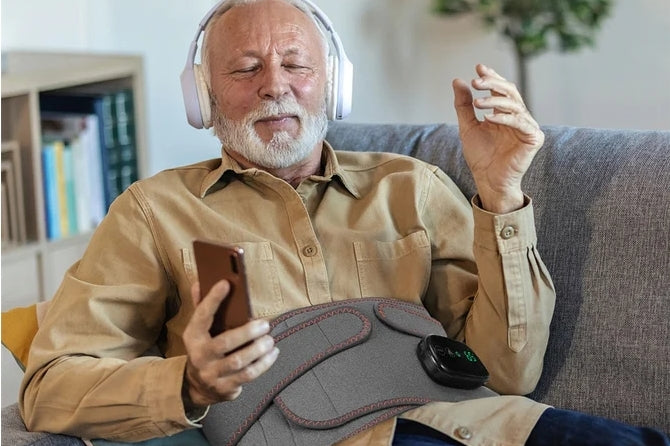Do Back Braces Work?

We see a plethora of back care products on the internet and market, and it's often a toss-up do back braces work or not. There are many back products on social media, whether about speeding up our recovery, improving our sporting performance, or improving our overall health.
However, instead of following these latest fads, we should do our little research. And the fact is that not all braces are useful.
Fivali hits it out of the park in terms of providing the practical utility of back support. This is because of the impressive back support benefits that Fivali back support braces offer. Brace yourself as we dive deep into your questions, such as do back braces work, when and who should wear them, and what types and uses of back braces.

Back Supports and Braces
Back supports and braces are designed to provide relief from back pain, improve posture, and strengthen your spine. High-quality back braces such as those from Fivali are not just a drop in the ocean. Each of the design elements is carefully calibrated so it can offer optimal support and comfort to your back.
Some people go through surgery and other spine treatments. You can easily avoid expensive medical treatments by simply wearing a back brace to strengthen your back muscles. However, we recommend that you first speak to your physician before wearing one.
When to Consider Back Braces?
When you are any of these individuals stated below, it's time to give your back the extra support it deserves.
1. Office Workers: Wearing a back brace is ideal for anyone who battles long hours at an office desk every day. It helps to keep your spine upright and combat posture fatigue.
2. Fitness Enthusiasts:If you are a fitness enthusiast who loves to lift weights or do other strenuous exercises, a back brace is an excellent investment for you as it provides stability and protection during intense workouts.
3. Recovery Champions: Post-injury, your doctor may prescribe you a back brace because it will help you in rehabilitation and ensure safe and supported healing.
4. Manual Laborers: If you are a worker on a construction site or warehouse, you should consider these braces as they reduce strain during physically demanding tasks.
5. Expecting Mothers: Gynecologists often prescribe maternity back braces as these braces support a growing belly. They also help ease back pain and give comfort throughout the pregnancy.
6. Spine Sufferers:Back braces are excellent in providing support and stability for managing conditions such as:
- Spondylolisthesis
- Osteoarthritis of the spine
- Spondylolysis
- Spinal stenosis
- Degenerative disc disease/lumbar herniated disc
- Scoliosis
- Vertebral compression fractures
- Muscle tension and strain
Common Types of Back Braces Available in the Market
Back braces come in a variety of designs and compositions. This is to address a wide range of back conditions, from post-operative healing to severe muscle strain. Most back braces in the market differ in their postural control and rigidity but are similar in materials. Overall, there are three types of back braces categorized as:
- Semi-rigid
- Rigid
- Flexible
- Classification by Targeted Area: Braces are often designed to target a specific area of your body. There are separate braces for your lower back, lumbar region, or full spine.
- Classification by Prominent Function: Some back braces are designed to serve a specific purpose. For example, one brace is designed for posture correction,while the other is designed for injury recovery.
- Classification by Material: Flexible back braces are made from soft materials such as neoprene, cotton, or elastic blends. While rigid and semi-rigid braces are made from sturdier materials with plastic bars or rigid panels.
- Classification by Adjustability: These are back support bracesthat come with adjustability features, such as adjustable straps for a more personalized fit.
- Classification by Wearing Style: Back braces come under different wearing styles,such as full-back braces that cover the entire back, belt-style braces that focus support on the lumbar region, and vest-style braces that offer full torso coverage.
When it comes to your spine, there's no room for compromise. Fivali offers a range of options to ensure you find the perfect brace that fits like a glove and supports you through every twist and turn.
Use of Back Braces
Using a back brace properly can make a big difference in how well it works for you. It's important to wear it snugly and comfortably so it supports your back without limiting your movements too much. Here are some more tips on using back braces correctly:
1. The Correct Way to Wear
When wearing your back brace, ensure that it is covering your entire back and the tailbone area. These areas are pivotal points to focus on in order to relieve pain and achieve good posture.2. Appropriate Frequency and Duration
Follow the instructions given by your physician on how to wear a back brace and when to take your back brace off. Your physician will advise you as per your individual condition. This typically involves you wearing it during activities that strain your back or worsen your condition. Normally, you should avoid wearing it for longer periods without breaks unless it is advised by your physician.
3. Proper Cleaning and Maintenance
We highly advise you to follow the instructions of the back brace manufacturer on how to clean it properly. Most back braces are not designed to be washed in the washing machines. Therefore, you hand wash your brace with water and mild soap. If your back brace has padding or panels, remove them first. Hang your washed back brace.

Integration of Back Support with Other Therapeutic Methods
While back supports can provide relief, leaning on them too heavily can have adverse effects. When you wear a back brace for longer than the recommended duration, it contributes to muscle atrophy and you get more dependent on it. This can weaken the back and increase the injury chance and worsens the pain.
You should blend the use of back braces with other therapies like exercise and ergonomic adjustments. Doing this will help tackle the root of the problem effectively and foster long-term spinal health.
I hope this article covers all of your concerns, such as do back braces work to how to use them. Back supports and braces are highly beneficial when you use them correctly and as part of a personalized treatment plan. It's essential to invest in the best back brace and follow usage guidelines provided by the manufacturer.
Explore Fivali's range of back braces designed for comfort and effectiveness, tailored to various needs. Consult with us to find the right brace for you and enhance your path to a healthier back.
-
Posted in
Back pain causes, Pain, Recovery













